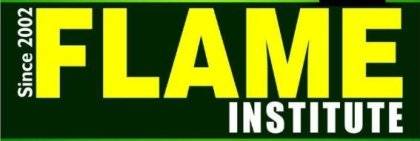(a) Dryopteris (b) Pteris (c) Adiantum (d) None of these Ans. a (6)
(a) Mature archegonia secretes maleic acid (b) Antherozoids are sickle shaped and multi flagellate (c) Archegonia has one binucleate neck canal cell (d) Antheridia develop on ventral surface of prothallus Ans. b (9)
(a) + 0.50 (b) – 0.50 (c) 0.25 (d) – 0.25 Answer-b (11)
(a) Rhizopus (b) Bacteria (c) Viruses (d) Pteris (Fern) Ans. d (5)
(a) Sorus (b) Sporophyll (c) Sporophore (d) Sporangium Ans. d (11)
(a) Ramentum (b) Placenta (c) Indusium (d) Sporophyll Ans. c (6)
(a) Modified stipules (b) Modified leaflets (c) Ramenta (d) Spines Ans. c (7)
(a) One with two nuclei (b) Two (c) One with one nucleus (d) Four Ans. a (5)
(a) –1 to 1/2 (b) -3/4 to -1/2 (c) -1/2 to 1 …
(a) Terrestrial habit (b) Aquatic ancestry (c) Both (a) and (b) (d) None of these Ans. b (7)
(a) Annulus (b) Tapetum (c) Sorus (d) Indusium Ans. a (8)
A rubber cord 10 m long is suspended vertically. How much does it stretch under its own weight (Density of rubber is 1500 kg/m3, Y = 5×108 N/m2, g = 10 m/s2) (a) 15×10–4 m (b) 7.5×10–4 m …
(a) Biflagellate sickle-shaped (b) Multiflagellate sickle shaped (c) Multiflagellate spirally coiled (d) Biflagellate spirally coiled Ans. c (10)
(a) Gamete formation (b) Spore formation (c) Formation of prothallus (d) Formation of sex organs Ans. b (7)
A substance breaks down by a stress of 106 N/m2. If the density of the material of the wire is 3×103 kg/m3, then the length of the wire of the substance which will break under its own weight when suspended …
(a) Laterally (b) Abaxially (c) Adaxially (d) Marginally Ans. b (4)
(a) Ovules (b) Ramenta (c) Sporangia (d) Archegonia Ans. c (7)
(a) Polycyclic dictyostele (b) Actinostele (c) Siphonostele (d) Amphiphloic siphonostele Ans. a (5)
A wire of cross section 4 mm2 is stretched by 0.1 mm by a certain weight. How far (length) will be wire of same material and length but of area 8 mm2 stretch under the action of same force (a) …
(a) Bacillus (b) Mango (c) Pteris (Dryopteris) (d) Spirogyra Ans. c (9)
(a) Dryopteris (b) Selaginella (c) Marsilea (d) Pinus Ans. a (7)
(a) Chlamydomonas (b) Funaria (c) Dryopteris (d) Riccia Ans. c (5)
A wire of length 2 m is made from 10 cm3 of copper. A force F is applied so that its length increases by 2 mm. Another wire of length 8 m is made from the same volume of copper. …
In the Young’s experiment, If length of wire and radius both are doubled then the value of Y will become (a) 2 times (b) 4 times (c) Remains same (d) Half Answer-c (17)
(a) Circinate vernation (b) Reticulate venation (c) Parallel venation (d) None of these Ans. a (7)
(a) Spores (b) Leaves (c) Fronds (d) Rhizomes (e) Both (c) and (d) Ans. d (6)
(a) Thallophyta (b) Bryophyta (c) Pteridophyta (d) Spermatophyta Ans. c (8)
(a) Sieve cells (b) Sieve tubes (c) Companion cells (d) Both (b) and (c) Ans. c (8)
(a) Adiantum and Cucurbitaceae (b) Osmunda and Equisetum (c) Marsilea and Botrychium (d) Dicksoni and Maidenhair fern Ans. b (5)
(a) Cycas (b) Selaginella (c) Pinus (d) Pteridium Ans. d (8)
(a) Zero (b) Infinity (c) 1×1010 N/m2 (d) 10×1010 N/m2 Answer-b (13)
(a) 500 N (b) 1000 N (c) 10000 N (d) 4000 N Answer-d (11)
(a) -∞ to +∞ (b) 0 to 1 (c) -∞ to 1 (d) 0 to 0.5 Answer-d (8)
(a) Cros fertilization (b) Self fertilization (c) Isogamous (d) Viviparous Ans. b (6)
(a) Mosses (b) Tracheophyta (c) Bryophyta (d) Liverworts Ans. b (8)
(a) Water (b) Insects (c) Chemicals (d) Winds Ans. a (8)
(a) Gymnosperms (b) Thallophyta (c) Bryophyta (d) Pteridophyta Ans. d (6)
(a) Archegonium (b) Protonema (c) Prothallus (d) Megasporangium Ans. c (7)
(a) Annulus (b) Stomium (c) Both (a) and (b) (d) Indusium Ans. c (6)
